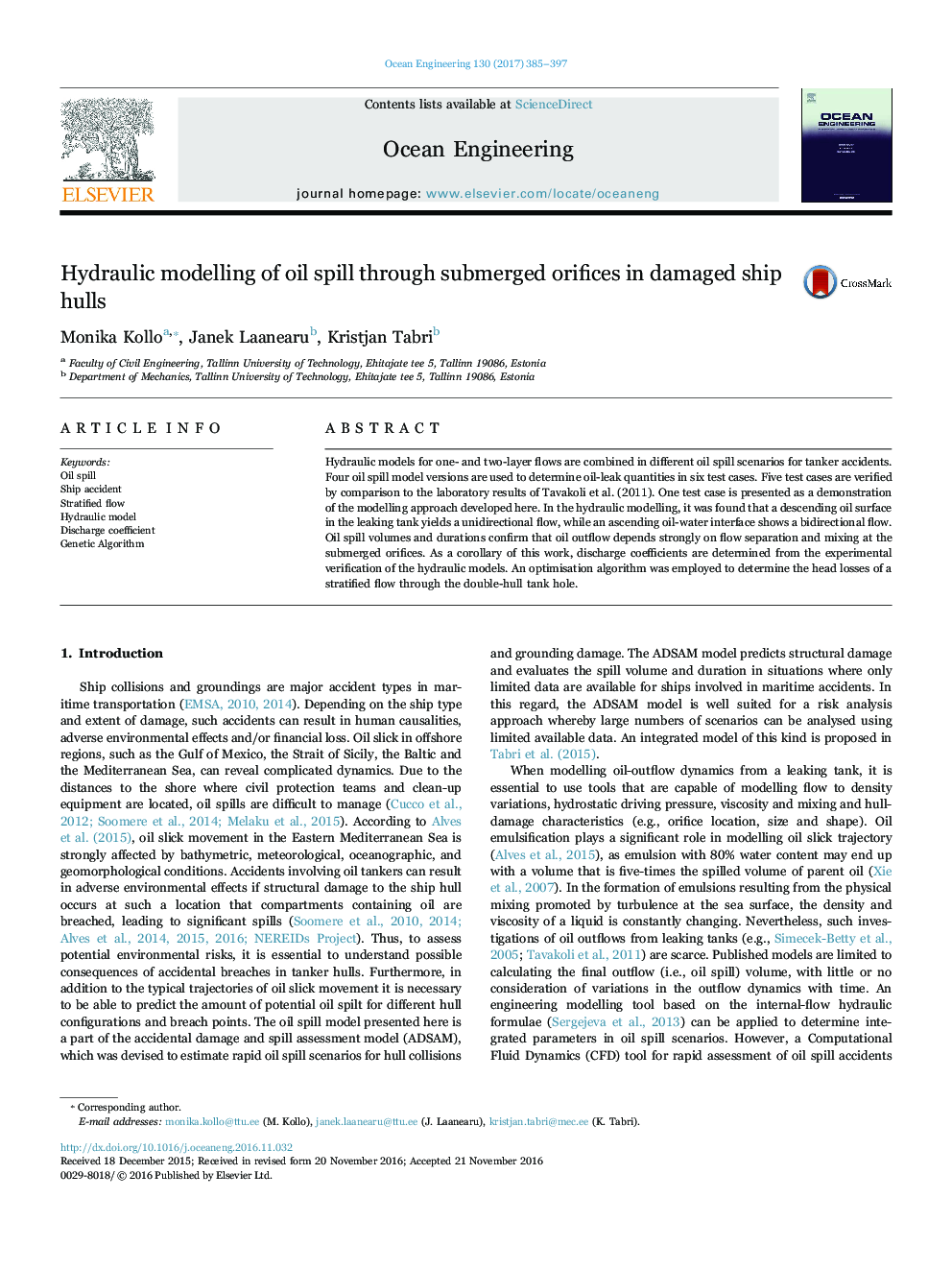| Article ID | Journal | Published Year | Pages | File Type |
|---|---|---|---|---|
| 5474638 | Ocean Engineering | 2017 | 13 Pages |
Abstract
Hydraulic models for one- and two-layer flows are combined in different oil spill scenarios for tanker accidents. Four oil spill model versions are used to determine oil-leak quantities in six test cases. Five test cases are verified by comparison to the laboratory results of Tavakoli et al. (2011). One test case is presented as a demonstration of the modelling approach developed here. In the hydraulic modelling, it was found that a descending oil surface in the leaking tank yields a unidirectional flow, while an ascending oil-water interface shows a bidirectional flow. Oil spill volumes and durations confirm that oil outflow depends strongly on flow separation and mixing at the submerged orifices. As a corollary of this work, discharge coefficients are determined from the experimental verification of the hydraulic models. An optimisation algorithm was employed to determine the head losses of a stratified flow through the double-hull tank hole.
Related Topics
Physical Sciences and Engineering
Engineering
Ocean Engineering
Authors
Monika Kollo, Janek Laanearu, Kristjan Tabri,
